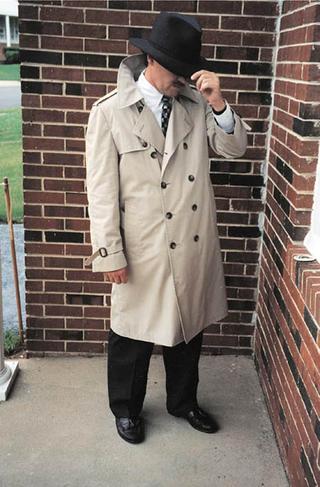Crappin’ Out on the Lossy Drag
You might not have noticed, but… I guess I’m not much of a gamblin’ man.
Oh, sure, I’ll push the limits of food safety as much as the next man, daring to down a slice or two of room temperature, morning-after anchovy pizza. That’s a bet I’m willin’ to take. But when it comes to my precious camera data, not so much.

You know the scene as well as I do… the one where the famous cowboy actor points his gun and says, “Do you feel lucky, punk? Well, do you?” Umm… no. I don’t. I never feel that lucky. And that’s why I bend over backwards to preserve file integrity when offloading my P2, SxS and AVCHD footage.
You’ve probably heard this saying, too: “It ain’t really footage until it exists in three places”—that means copying. Almost from the moment you shoot it, you’d best be copying that data to keep it safe. Only one problem, amigo: Copying camera files can be the exact opposite of “safe.”
MOVE YOUR BITS, BABY
So here’s a personal question: How do you move your bits? In bit buckets? How do you prevent data from getting dirty?
Here’s my guess. Dollars to donuts, you’re doin’ the same thing you do when you move your holiday snapshots and cat videos— you’re doin’ the lossy drag. Drag-’n-droppin’ those files from one folder to another in no way guarantees that all the data winds up arriving, uncorrupted, at its destination. That’s why it’s called “lossy.” Doesn’t happen all the time, or even all that often, but when it does, you’ve lost a valuable scene from that expensive shoot day, and there’s no getting it back.
How about now, punk? Still feel lucky? Looks to me like you rolled the dice and crapped out. Bummer.
For the gold standard in data wrangling, we would normally look to those master Hollywood datakeepers, the DI Guys. They’ve got millions in play, what with high-priced talent, exotic locations and gigundo crews. So they must really know how to protect footage. And they do. They hurl giant buckets of money at world-class capture and backup systems. They sit in air-conditioned trailers and sip cool beverages, supervising file transfers while the actors act and the shooters shoot—their data perfectly safe.
If that’s not quite your job description, fear not. Keeping your data intact is within the reach of even the most poverty-stricken freelancer.
Here’s the two-part formula. The first part is easy, once you’re in the know. Get the right software. I know of two relatively inexpensive apps that will save your bacon over and over… Imagine Products’ ShotPut Pro, and Red Giant’s new Offload. (Bet there are others, too.) They’ve got all sorts of convenient creature features like automatic numbering and multiple drive destinations, but the core technology is the same unglamorous, time-tested technique used since the first mainframes. They use checksums to perform verified file transfers, moving bite-sized chunks of data and making sure each chunk arrived safely. By comparison, your lossy file drag is the equivalent of lobbing empty beer cans over the fence into your neighbor Lloyd’s backyard. (Not that I would know about such things.)
The second part is the hardest, by a mile: ritual and discipline. Protect those camera files immediately, in the exact same way, absolutely every time you shoot… no excuses! Use uniform numbers, names, Hello Kitty stickers or whatever it takes to keep them organized; and do it right away, before the wrap party, and maybe even before the batteries go back on the charger. This is the OCD portion of your otherwise messy life, and you must obey.
FILE INTEGRITY FEELS GOOD
I’ll warn you that once you’ve found this path to data righteousness, you might start to ask yourself ever-harder, more philosophical questions. What about Quick- Time and DNxHD files from Ki Pros and PIX240s? Shouldn’t every file always get moved this way? Is it ever okay to simply drag and drop? Fine questions, all, and I hope you spend many hours discussing them over a delizioso bottle of a fine Italian Primitivo; but here’s the punchline—you archived a verified, known-perfect copy of your camera data before erasing and reformatting the storage media for the next job. Talk about starting from a position of strength.
There’s an unglamorous reward for doing things that are hard and boring, a kind of non-trophy way of celebrating things that never happened: Someday, you look back and realize that you’ve never lost a file. And as a result, probably never lost a job or a client.
And that, my fine punk, is the real definition of “lucky.”
Mario Orazio is the pseudonym of a well-known television engineer who wishes to remain anonymous. E-mail him atmorazio@nbmedia.com.
Get the TV Tech Newsletter
The professional video industry's #1 source for news, trends and product and tech information. Sign up below.
